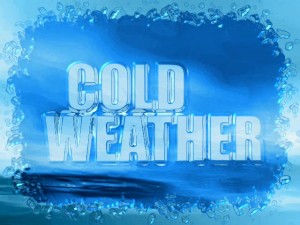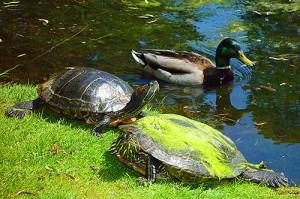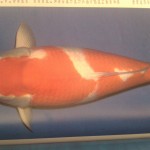Looks like the Temperature has dropped today here in San Gabriel Valley! Our ponds are measuring between 50 and 51 Degrees.
Turtles and Ducks,Yuck Yuck Yuck!
Turtles and Ducks may be cute and exciting to watch, but their feces is very rich and tend to pollute water very quickly. It is also very hard to filter their feces because being so rich like “stinky gooey chocolate” that a biological filtration is needed. Sometimes you can never get enough to handle the load that is producing. Another problem is that they both eat fish, small fish usually.
I had a client that was complaining of a fin disease inflicting his koi. On examination on the fish, I pointed out to him the “diseased” fins had chunks missing that was the exact shape of the turtles beak. The turtle was biting the fins of the fish!
Ducks can easily carry disease in feces. As they feed on fish from another pond and fly into your pond and poop, this will bring disease to your water garden and effect your fish. Both Turtles and Ducks forge and dig in soil and aquatic plants for grub, which makes a mess. Another problem are ducklings, yes they are cute as a button and who wouldn’t want baby ducks swimming around in their pond, but duckling who nest in a pond are a problem. I had a friend who once allowed ducks to nest and they had a joy watching them. Then.. they leave the nest and migrate back. Which means they will nest their ducklings in the pond and the cycle will go on and on for years and years till he had so many ducks on his property, him and his wife were trying to get them out of their yard.
Our advice, don’t put ducks and turtles in your pond!
P.S. We do have some clients that have turtles and ducks, we just clean the ponds more often then usual.
Koi Colors and Patterns
In Koi keeping, hobbyist always begin with a Kohaku and end with a Kohaku. When new hobbyists begin, they always overlook the Kohaku koi for its simplicity; looking to much like goldfish. However, they always end up appreciating the colors and patterns of the Kohaku and turn to this simple beautiful koi.
“The Kohaku share the colors of both the Japanese flag and the symbol of that country, the Tancho crane, but it is much more difficult to find a prize Kohaku than a show winner of any other variety. In Japan, to own a good Kohaku is the ambition of every koi-keeper.” (Kin Matsuba pg.128)
Matsuba, Kin-“The Tetra Encyclopedia of Koi” By, Kin Matsuba
Koi Facts
Breeding Age: Females over 3 years and Males at least 2 Years
Sexing koi smaller than 10 inches in length is impossible, because they are sexually immature. Once the koi grow to mature size, the ovaries in females and testes in males begin to develop. Female koi are way easier to spot because the ovaries are a much larger organ than the testes and it makes the females belly look more plump rather than how the male has a torpedo shape.
The males develop breeding tubercles on the head and pectoral fins when they are ready to spawn. The breeding tubercles materialize as raised spots making it look like Ichthyophtirius, which is a white spot. The tubercles are rough when touched and are in rows. The male koi nudge the female with his head and fins to persuade her spawn with this breeding ritual.


